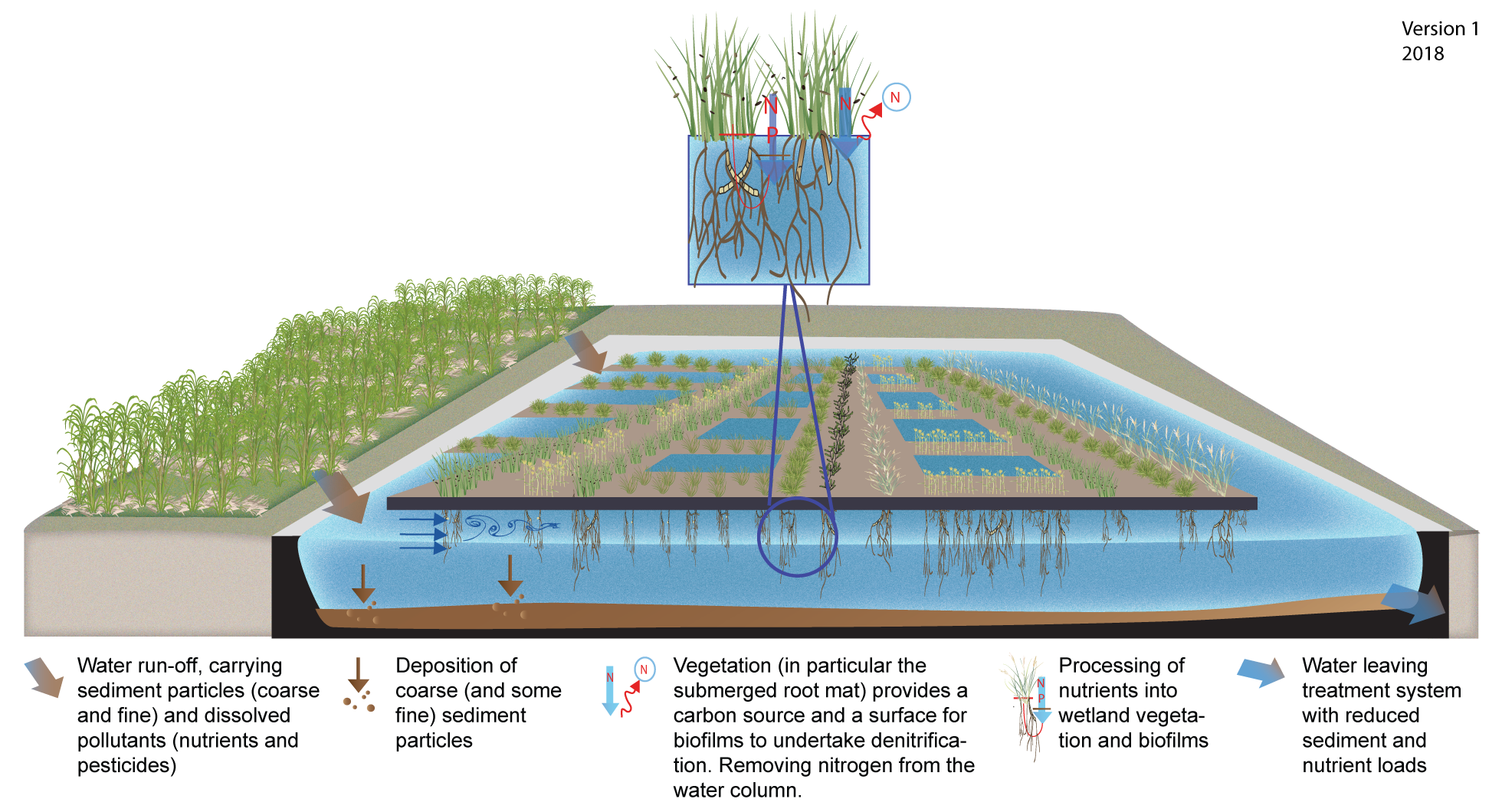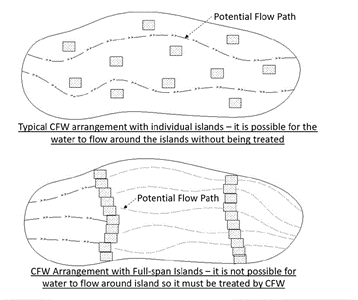|
|
Floating wetlandsFloating wetlands — Planning and designSelect from the tabs below Site selectionFloating wetlands can be located in existing waterways or ponds, or a purpose built pond. They should be located where flows are generally slow to moderate and where there is permanent water. Large variations in water height or sites with high velocities could damage the floating wetland and will make it challenging to secure the matrix. SizingThe area of floating wetland required to treat a subcatchment area is not well documented. Further testing is required to determine optimal sizing for Queensland conditions. One study examined a floating wetland sized to 0.14% of the contributing urban catchment. Despite being subject to highly variable flows it achieved removal rates of: TSS 76%, TP 55% and TN 17%[3]. The size of floating wetland could be calculated according to predicted flow, water volume and desired hydraulic residence times (see sizing under treatment wetlands). Longer hydraulic residence times of 3 to 5 days increase nitrogen removal compared to shorter residence times[1]. To facilitate denitrification, the floating wetland should cover a minimum of between 10% and 50% of the pond s pond/lake surface area coverage is recommended to create the anoxic conditions needed[4]. Most floating wetlands are implemented as a modular technology and can be expanded if results show more floating wetland footprint is required to achieve pollutant reduction within an existing waterbody/lagoon. Design
Figure 3 The arrangement of floating wetlands will influence pollutant removal and the image below is recommended to maximise water contact with plant roots and the opportunity for pollutant removal. Image by Lucke et al 2019[2]
DisclaimerIn addition to the standard disclaimer located at the bottom of the page, please note the content presented is based on published knowledge of treatment systems. Many of the treatment systems described have not been trialled in different regions or land uses in Queensland. The information will be updated as new trials are conducted and monitored. If you have any additional information on treatment systems or suggestions for additional technologies please contact us using the feedback link at the bottom of this page. References
Last updated: 19 April 2022 This page should be cited as: Department of Environment, Science and Innovation, Queensland (2022) Floating wetlands — Planning and design, WetlandInfo website, accessed 8 May 2025. Available at: https://wetlandinfo.des.qld.gov.au/wetlands/management/treatment-systems/for-agriculture/treatment-sys-nav-page/floating-wetlands/planning-design.html |

 — Department of the Environment, Tourism, Science and Innovation
— Department of the Environment, Tourism, Science and Innovation



